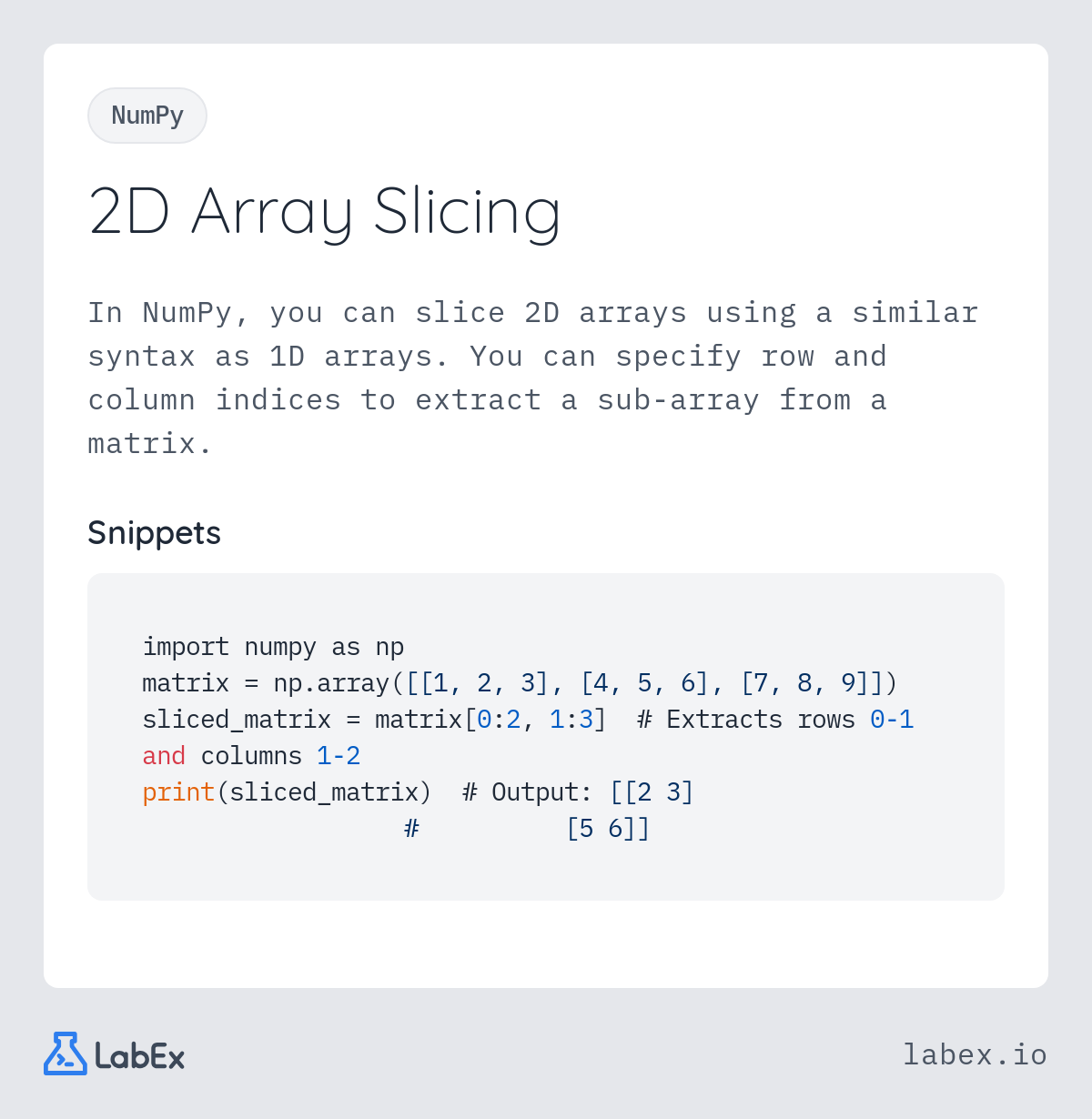
2D Array Slicing
In NumPy, you can slice 2D arrays using a similar syntax as 1D arrays. You can specify row and column indices to extract a sub-array from a matrix.
Explore our curated collection of programming flashcards. Each card contains practical examples and code snippets to help you master programming concepts quickly.